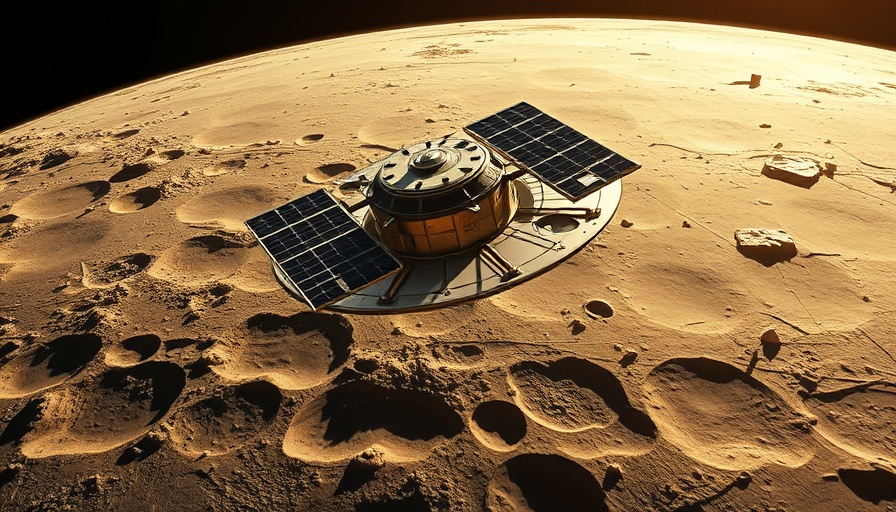
Trail Blazing into the Cosmos: What SpaceX's Lunar Trailblazer Means for Moon Exploration
As humanity looks toward the stars, new missions like the Lunar Trailblazer illuminate our path on the moon, promising discoveries that could change our understanding of the cosmos. Scheduled for launch on February 26, this innovative university-led probe is designed to study the locations and potential reservoirs of water on the moon, making it a monumental step in lunar exploration.
The Mission’s Aim: Unveiling Lunar Water
The Lunar Trailblazer aims to uncover the elusive signatures of water ice in the moon's permanently shadowed regions and evaluate how lunar surface temperature changes impact water signatures throughout the lunar day. This mission, managed by NASA's Jet Propulsion Laboratory (JPL) and led by California Institute of Technology (Caltech), seeks to answer critical questions about the moon's water resources. By sending this probe into lunar orbit, researchers hope to map not only the distribution of water but also understand the lunar water cycle, which could inform future lunar missions.
Historical Context: Building on Past Lunar Missions
The Lunar Trailblazer shares technological and conceptual roots with earlier missions like NASA's GRAIL, which successfully mapped the moon's gravitational fields in 2011. Just as GRAIL laid the groundwork for understanding lunar gravity, the Lunar Trailblazer can potentially unlock the long-held mysteries of lunar water. This long-term investment in lunar research underscores a scientific continuity that links past efforts with future ambitions.
Innovative Engineering: A New Era of Space Probes
Developed by Lockheed Martin, Lunar Trailblazer utilizes their new Curio platform, marking a significant advancement in small spacecraft architecture. This tailored design streamlines the cost and complexity of interplanetary missions while ensuring precision in data collection. With its lightweight structure and deployable solar arrays, the probe exemplifies the efficient engineering necessary for deep-space exploration.
Future Predictions: A Catalyst for Lunar Exploration
The results garnered from the Lunar Trailblazer can catalyze future lunar exploration missions. Understanding water's presence on the moon is not merely a quest for knowledge; it has profound implications for potential colonization efforts and in-situ resource utilization, especially as plans for manned missions to the moon and Mars take shape. By identifying accessible water sources, the mission paves the way for sustainable human presence beyond Earth.
Broader Implications: Why Lunar Discoveries Matter
Exploring the lunar surface for water could allow humans to build bases on the moon, serving as vital checkpoints for astronauts headed to Mars. The Lunar Trailblazer's findings might also aid in predicting how celestial bodies like asteroids and comets contribute to the evolution of water across the solar system. Such knowledge forms the foundation for understanding planetary formation and could even have implications for life beyond Earth.
 Add Row
Add Row  Add
Add 




Write A Comment